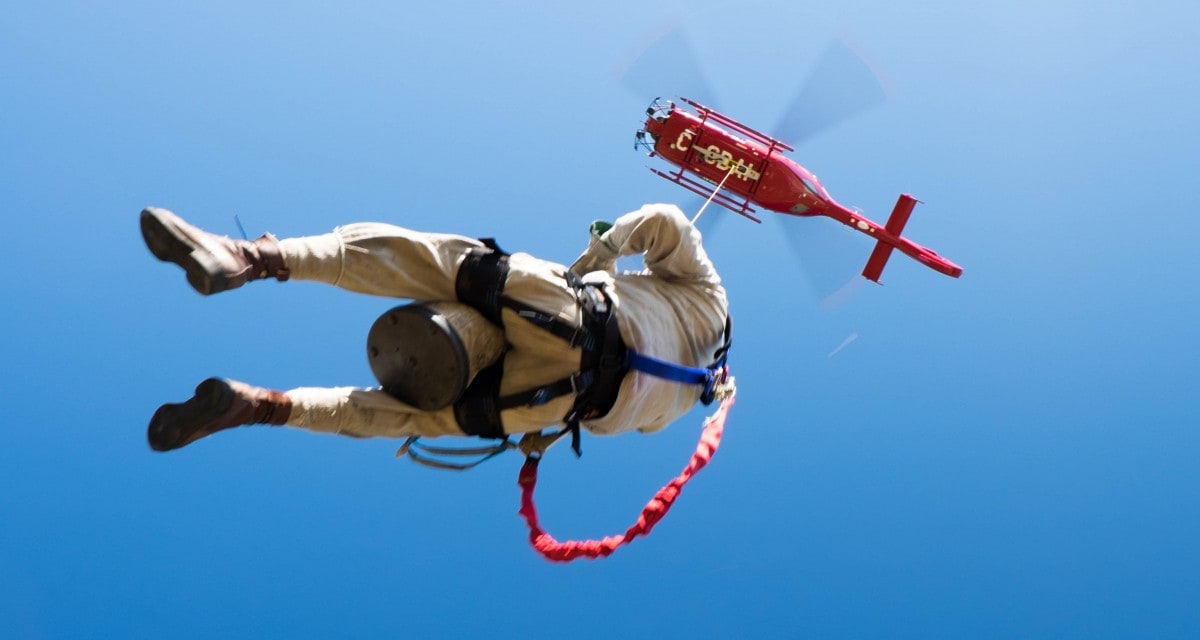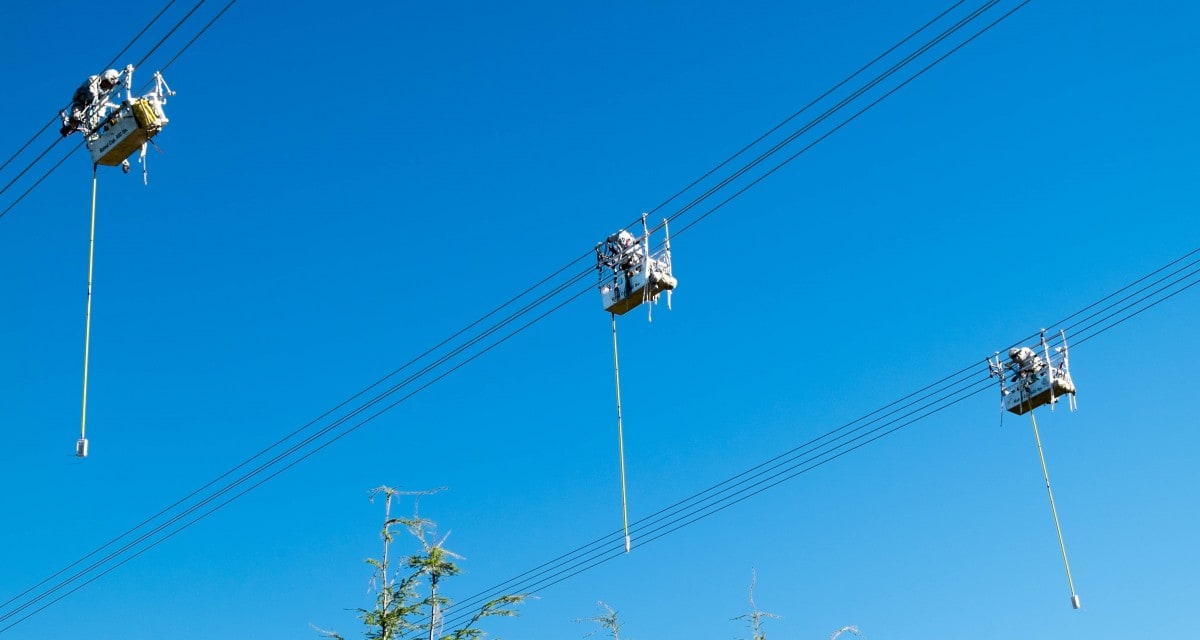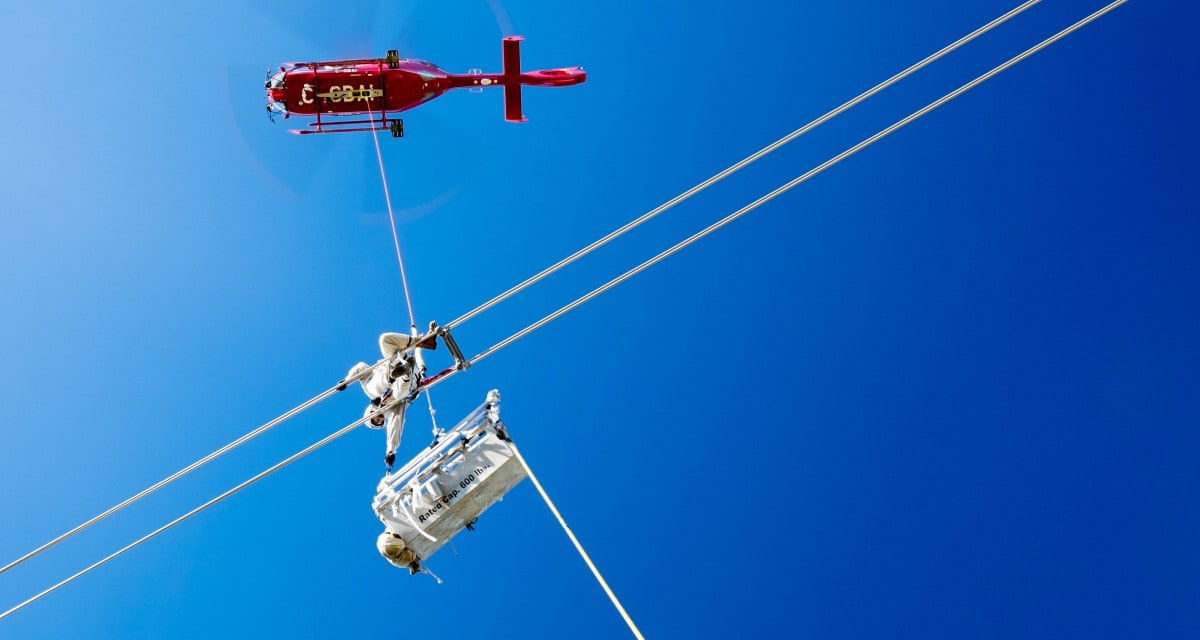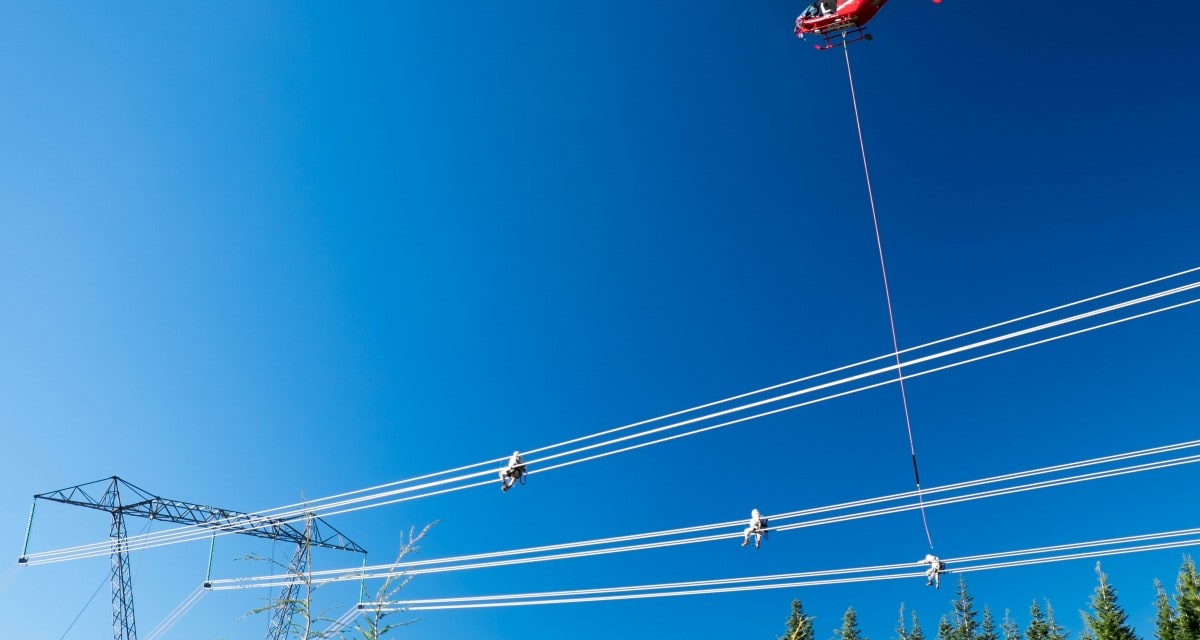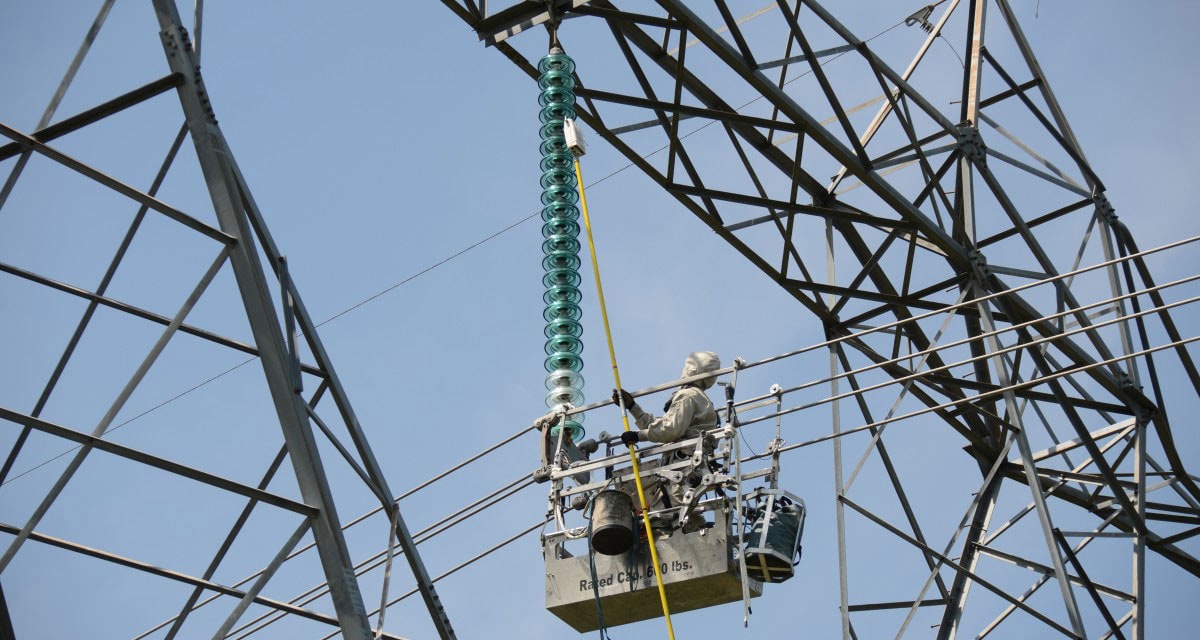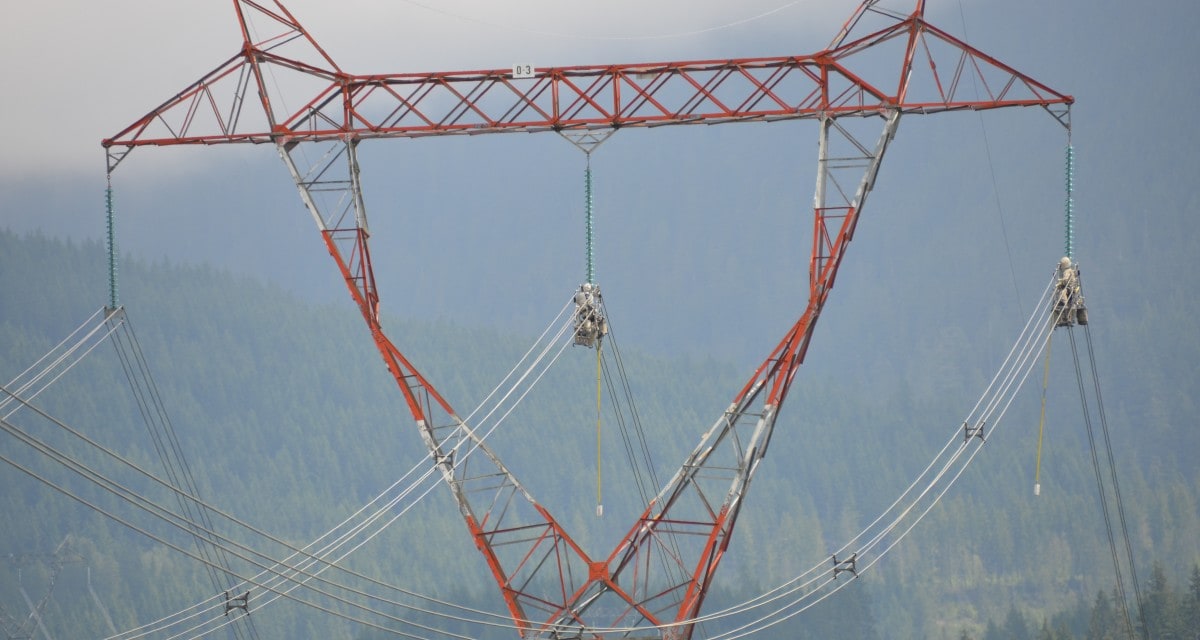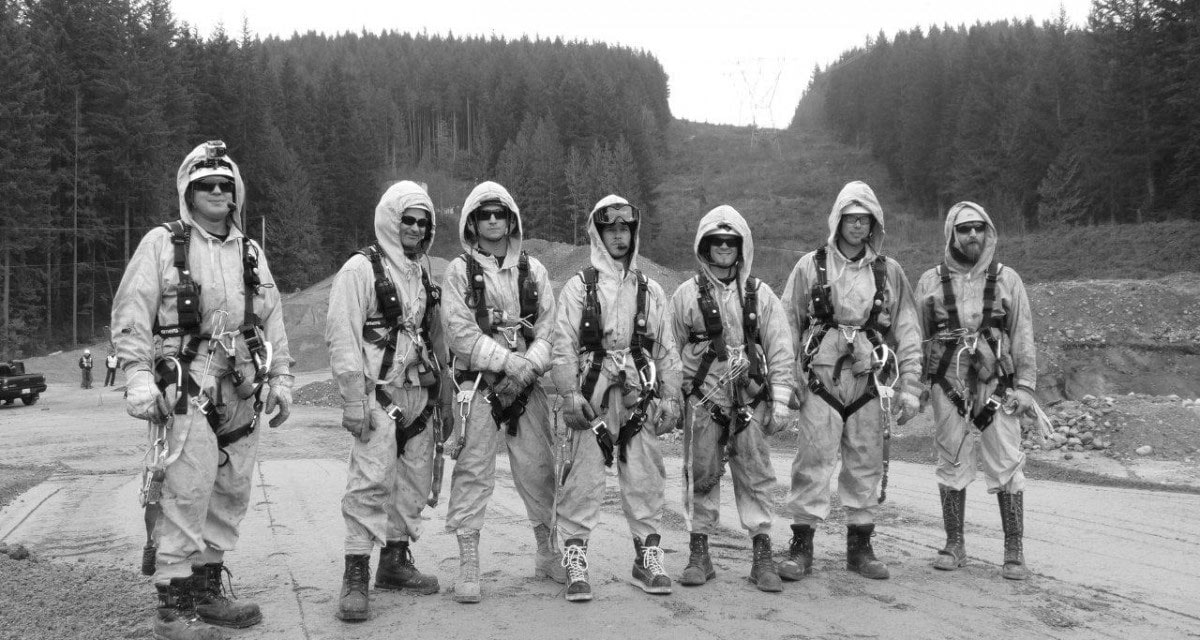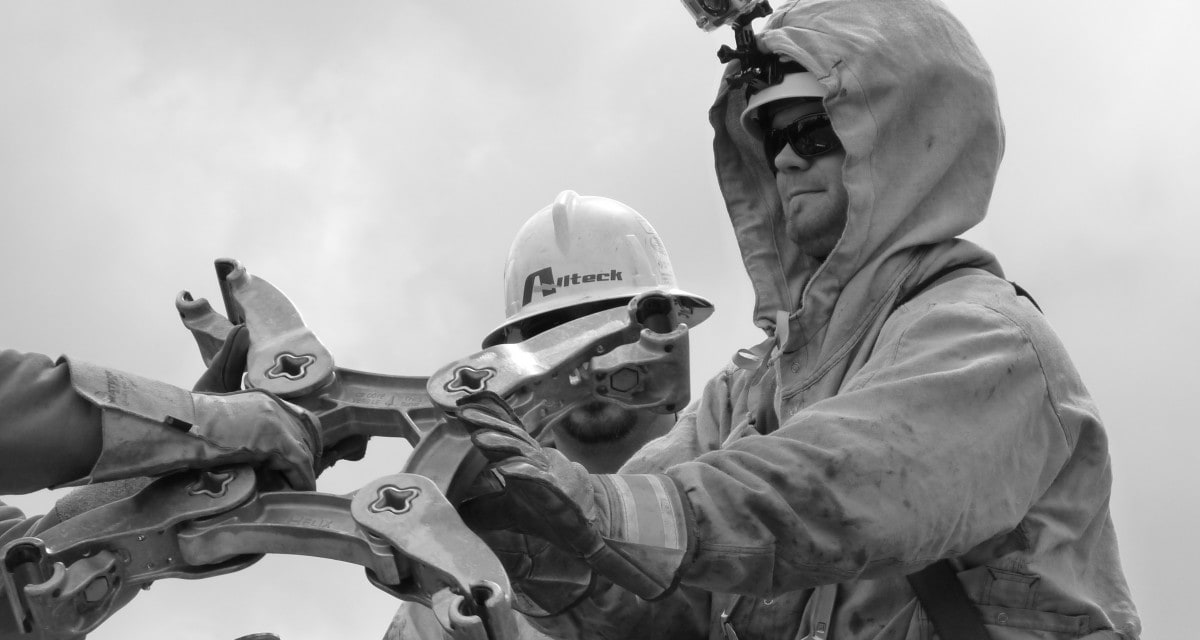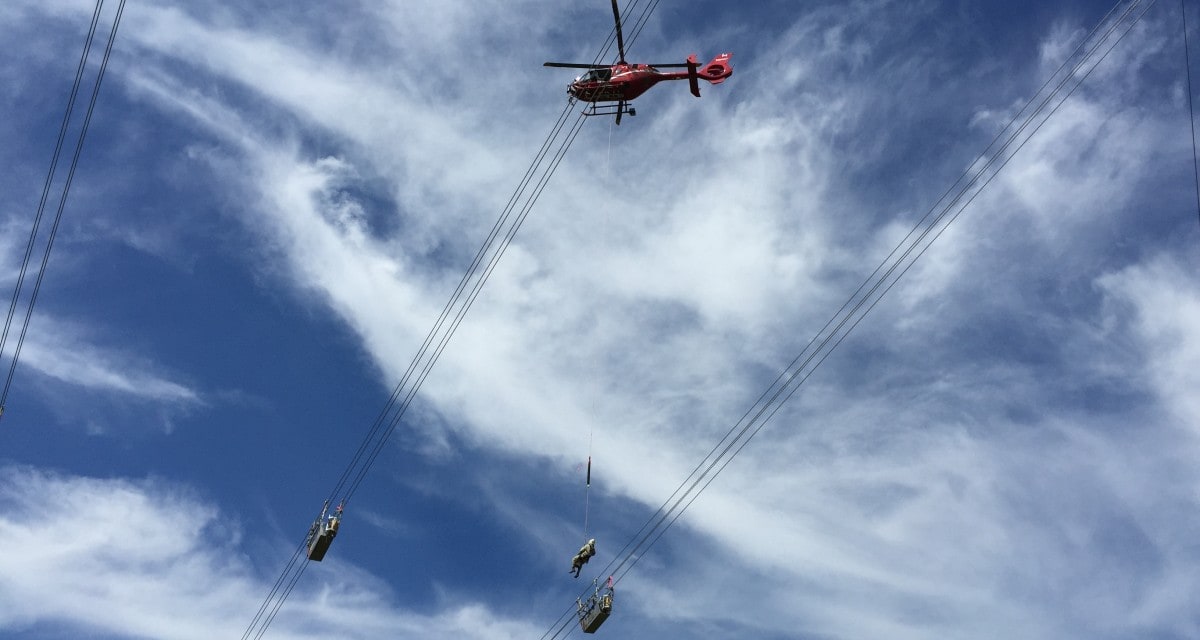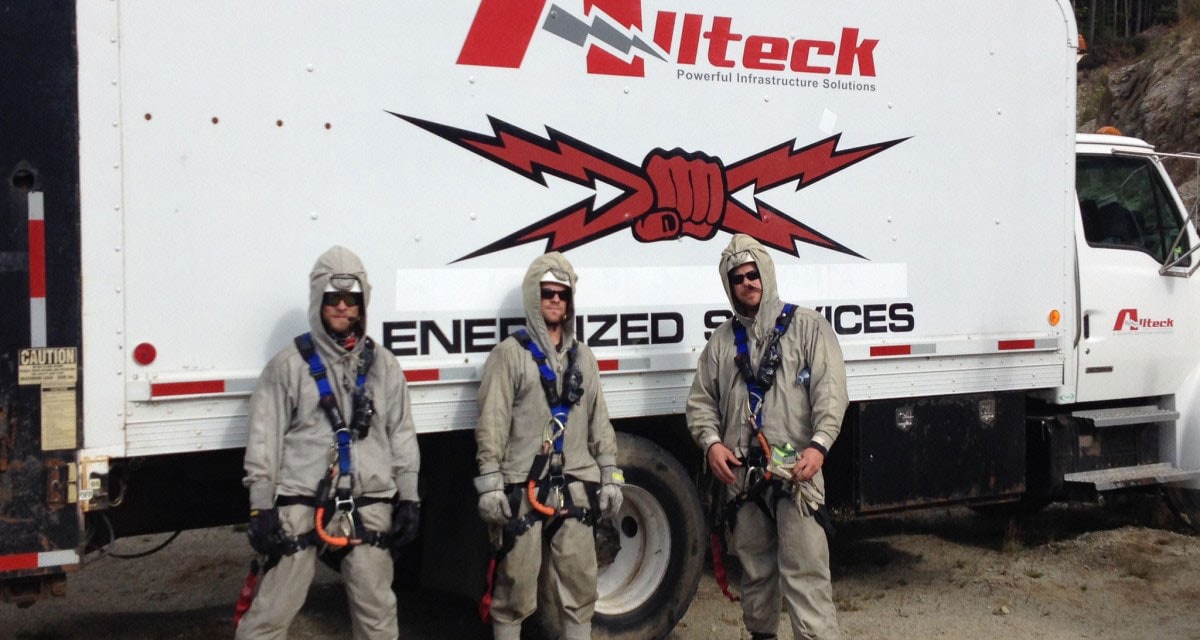B.C. Hydro Energized Spacer Replacement – Smithers to Vancouver Island
The Project
BC Hydro required the replacement of spacers spanning from Smithers B.C. all the way to Vancouver Island. The multi-year project began in 2012 and involved 46,000 spacers on 13 circuits with a total length of about 1200km with a combination of 500kV and 230kV transmission lines.
Allteck partnered with Blackcomb Aviation to pioneer and develop the helicopter Class “D” work method. This Transport Canada and Worksafe approved work method positions workers onto the energized conductors using a long-line. This was the first time this method was used in Canada. This long-line method dramatically reduces the risk to employees as the risk of rotor blades coming in contact with the conductor is minimized.
The Challenges
Rugged terrain and high elevations have made Class “D” work methods necessary for the proper execution of this project. Limited road access rendered the use of bucket trucks impossible for much of this project. The mountains made for very steep wire angles and adverse weather conditions requiring the development of the Class “D” work method and specially trained crews capable of performing the work on live wires without any interruption of power.
Specialized Work Methods
As the high-voltage lines remain live during the spacer changes, energized work methods known as Barehand techniques are used to avoid any disruption of power. Barehand work is possible with the use of specialized suits through which the electric charge flows while avoiding the lineman’s body. See our Energized Services page for more information.
Client: BC Hydro
Owner: BC Hydro
Category: Energized Services
Location: British Columbia, Canada
